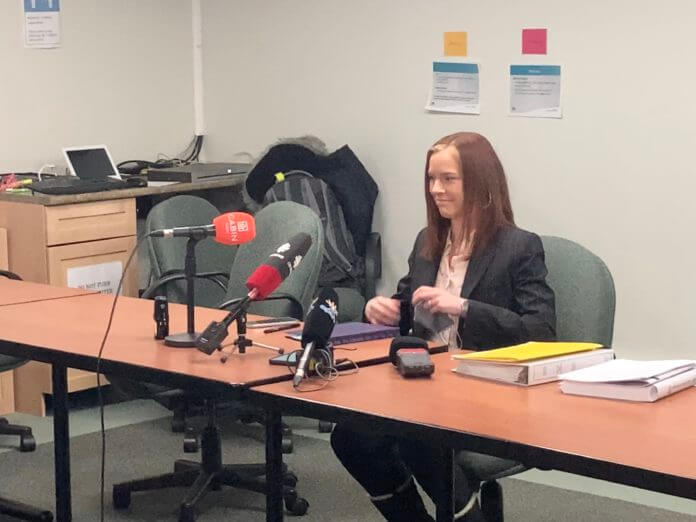The territory’s gross domestic product is expected to have shrunk by 6.6 per cent in 2020, largely due to the pandemic.
With the economy in decline and the GNWT releasing its 2021-22 budget, MLA’s are calling on the territorial government to now release its economic recovery plan.
In April 2020, the territorial government released “Emerge Stronger”, its initial economic recovery plan, outlining how the economy would be restarted after the pandemic.
During budget presentations to the media, the GNWT described its own fiscal plan as unsustainable, and highlighted the need for economic diversification and a review of government programs.
In the legislature on Wednesday, Kam Lake MLA Caitlin Cleveland called on the territorial government to unveil its economic recovery strategy, saying the territory’s economy had been struggling even before the pandemic.
Some elements of what will likely make up the economic recovery plan were laid out in the 2021 budget.
As well as government renewal, there was emphasis on economic diversification and the need for the NWT to improve the variety of businesses that operate in the territory
Wawzonek noted investments in several areas, including education, childcare and the territory’s climate change plan, would help with this.
Wazonek said there had also been a position created focusing on the “knowledge economy” which will help with coming up with “regional economic development strategies.”
“While tourism and mining might cross all the Northwest Territories, if there is a region that has a particular interest in the fur trade, or in the fishing industry, or in film industry for example,” Wawzonek said. “There may only be a handful of jobs, and it may not necessarily reflect a huge change in the overall GDP picture. But for those particular communities, those could be tremendous impacts.”
Wawzonek had also outlined infrastructure spending as key to the territory’s economic recovery. The budget for capital projects approved came to $451 million, but with a smaller surplus this year than in the 2020-21 budget, most of those infrastructure projects will be paid for through borrowing. Wawzonek said she was cautiously optimistic that growth in own-source revenue could mean future budgets will look similar.
“If we can take the opportunities that are here, to make strategic investments to have and if we’re using our capital budget well, we may well start to see things improve to the point that this is not the last time that we can have a budget like this, namely a stability budget,” said Wawzonek.
“I think if we are being careful and using the sort of approach that we are,” she added. “I think we can still be in the same position next year, which isn’t necessarily seeing an improvement, but at least that stability can be maintained.”





